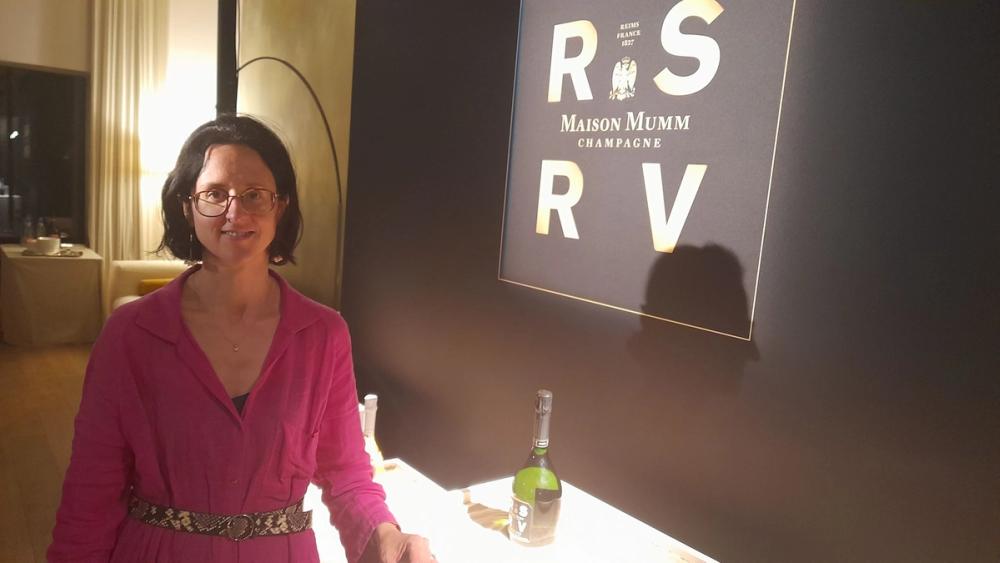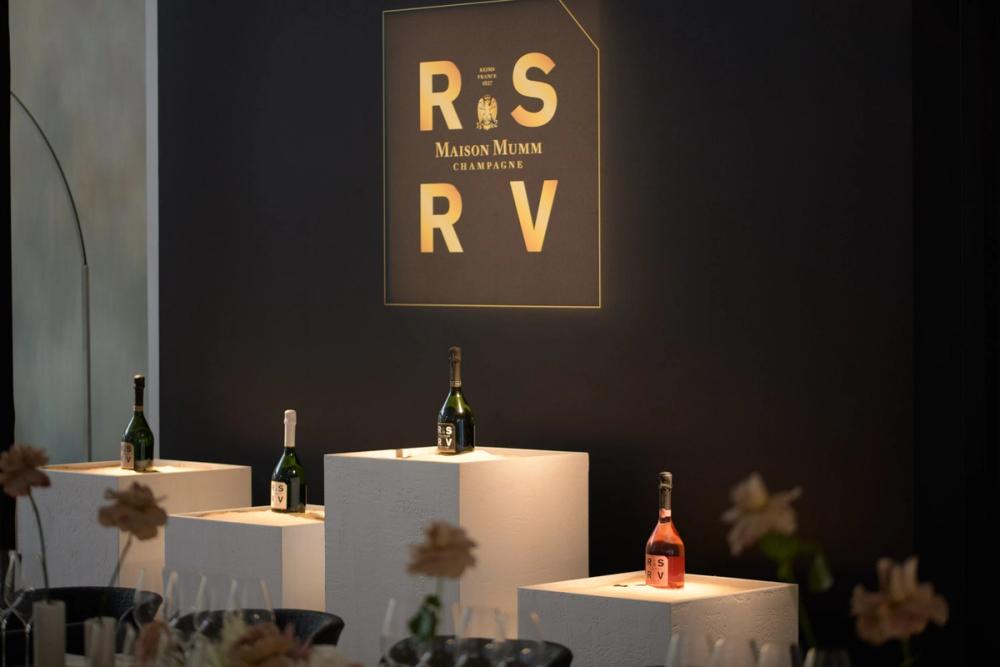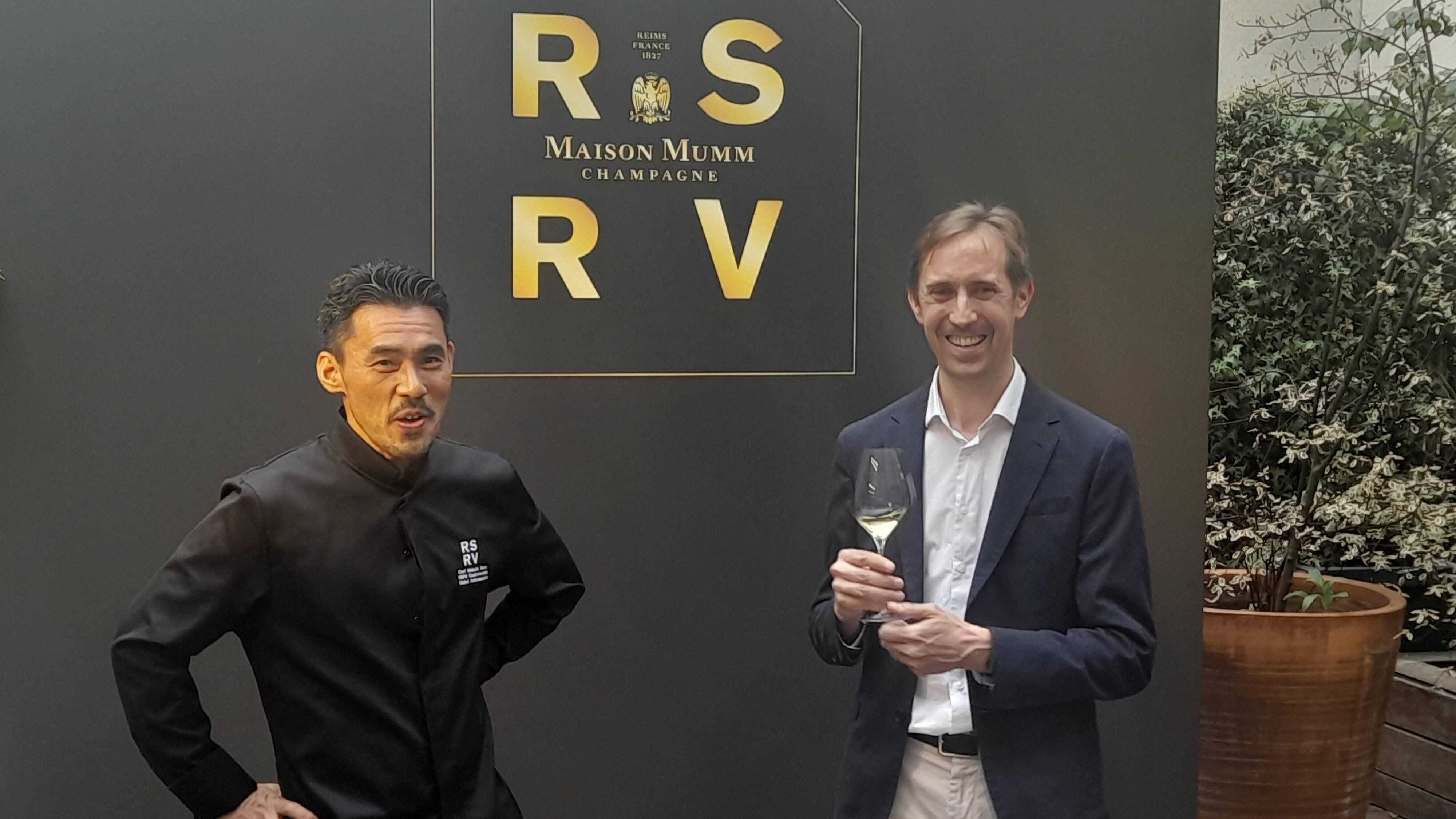GH Mumm is one of the oldest Champagne houses, having been founded in 1827, but it is also among the most forward-thinking. It ticks many worthy boxes - such as its HVE (Haute Valeur Environnementale), Sustainable Viticulture in Champagne and QSE (Quality Safety Environment) certifications - but at a dinner in Paris last month the company promoted some of its prestigious RSRV gems that have just been released into the British market, as well as introducing its new cellar master, Yann Munier.

Along with a posse of British wine and gastronomy writers and half a dozen French counterparts, the full marketing and sales team of GH Mumm and its owners, Pernod Ricard, was present at the dinner, prepared by triple Michelin star Japanese chef, Hideaki Sato. Pernod Ricard’s marketing director, Marie De Vries, said the aim was to increase RSRV sales to both the on-trade and high-end retail outlets in the UK, which currently occupies bottom spot in the ten-market league table where the labels are exported.

Aiming to increase RSRV sales to the on-trade: Pernod Ricard’s marketing director, Marie De Vries
Camille Paboudain, brand manager for GH Mumm globally, pointed to the mystique of RSRV wines.
“Through RSRV we want to uncover the singular personalities of our terroir,” she declared. “The experience tonight is to showcase how, with our human touch, we can express the best prophetic expressions of our terroir. Something we believe in that is very important - it’s the textures. Through texture we reveal the personality of terroir. The whole ‘Toucher du Vin’ experience tonight is around texture - how you can get to know this terroir through texture.”

Tasting RSRV while caressing different material
Talking through this 'Toucher du Vin' experience was the Dijon-based author and lecturer Cyrille Tota.
“I highlight the importance of the touch,” he announced. “The sensation we have at the end of our fingers is the same as for taste. Hold the fabrics between your fingers, and then taste the RSRVs and you will see.”
The fabrics supplied in a smart leather folder were akin to lace, velvet, silk, cotton and felt. Whether all five were apt descriptors of the wines was a moot point, and depended on individual palates, but Tota provoked plenty of debate.
Why the RSRV cuvées are so special
Some background on the RSRV labels may be useful. Since the early days of the house's foundation, a chosen few VIPs were the recipients of some of its finest bottles, which were marked in house records as RSRV or ‘reserved.’ These bottles were accompanied by a calling card with one corner folded over to denote they were for the chosen few.
Early this millennium, the house decided to release RSRV grand cru cuvées to the international market. In deference to the history of these ‘reserved’ Champagnes, one corner of the label is folded over to imitate the original calling cards.
Each bottle in the RSRV range is made from a blend of grapes from across GH Mumm’s grand cru vineyards, which total 160 of the 218 hectares it has under vine. As much as 78% of its plantings are Pinot Noir, the rest being Chardonnay.
Growers also contribute a significant amount of fruit, including Pinot Meunier, to GH Mumm which, like other bigger Champagne houses, chooses not to release annual production figures. Munier revealed that it has over 100 growers from ‘nearly everywhere’ in Champagne, with some of its families having had grower contracts with GH Mumm for 100 years or more.
“Regenerative viticulture is the key for us,” Munier, who joined GH Mumm in April, told The Buyer. “We try to develop a vineyard and leave some life in the soil. Global warming we cannot change but we have to adapt our production and try to keep freshness and adapt vigour. Our vinification process is changing, and one way is to stop malolactic fermentation, which is less than 20% now.”
Respect for the brand’s long and distinguished history is at the core of GH Mumm’s marketing philosophy.
“It’s a legacy thing - we have almost 200 years of history,” De Vries mused. “I like to listen to what has been done and I try to carry on and enhance and enrich. Our job is about repeating this consistency and relevance of the messages already there. It’s not to reinvent the messages. It’s about the power of repetition.”
With the highly capable Munier at the helm, expect many repeats of majestic RSRV wines .
How the wines tasted

RSRV Blanc de Blancs 2012
Made entirely from fruit in Cramant’s chalky soils in the Côte des Blancs appellation, from grand cru plots the house purchased in 1882. Three years on the lees; 6g/l dosage. Minerality and sparkling freshness accentuated by low pressure of 4.5 bars rather than the standard 6. Delicate aromas of white flowers and citrus, with notes of lemon meringue and grapefruit that dance on the palate. A very long finish. Excellent.
RSRV Blanc de Noirs 2009
Fruit from Verzenay, the highly reputed grand cru village north of Montagne de Reims where the house first purchased plots in 1840. Six years on lees; 6g/l dosage. Pinot Noir loves the calcareous soils which, together with altitude and north-east aspect, help give the wine precision, clarity and richness. Fine autolytic notes in a stunning Champagne with tension and considerable length.
RSRV 4.5
Name derived from four years on the lees and fruit from five grand cru sites: 60% Pinot Noir from Verzenay, Ay, Bouzy (giving power and structure); 40% Chardonnay from Cramant & Avize ( elegance, liveliness and citrus). 6g/l dosage. Grapes vinified separately before being blended with reserve wine. White and yellow fruit aromas with notes of marmalade, honey and nougat. A cracking NV.
RSRV Rosé Foujita
Named as a tribute to Leonard Foujita, the Japanese-born artist who created the frescoes in Mumm’s Notre-Dame-de-la-Paix chapel in Reims as well as the motif on the house’s rosé champagne (in 1958). A blend of Chardonnay from Cramant and Avize, with Pinot Noir coming from Ay, Boozy and Verzenay. All vinified separately and then blended before 30% reserve wines added. Finally, red wine from the grand cru vineyards of Ambonnay added to give extra roundness and minerality. Four years on lees; 6g/l dosage. Strawberry and cherry notes on this seductive rosé, which has notable length.
































